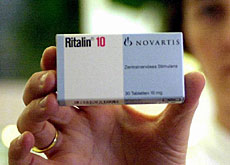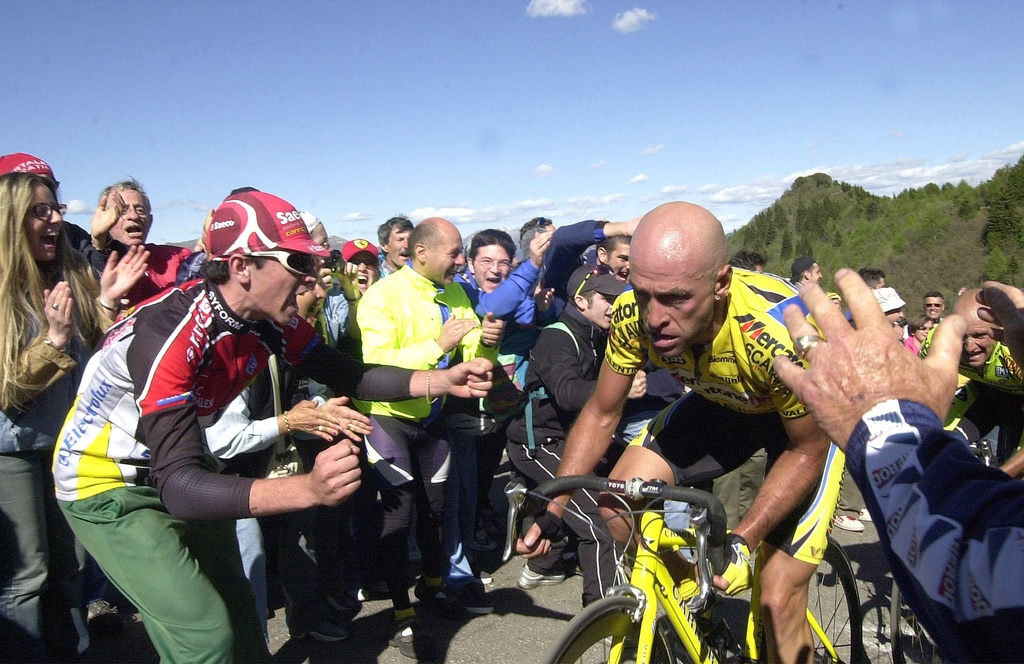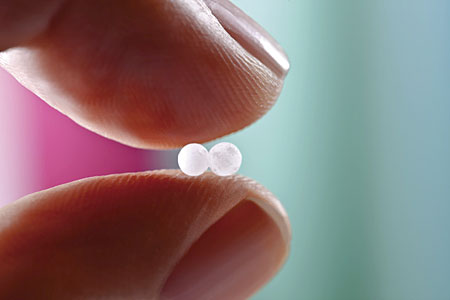Ritalin use is on the rise

Production of the drug Ritalin has increased ten-fold over the past decade, yet “Fidgety Phil” isn’t the only taker.
Originally prescribed to children considered to be hyperactive, Ritalin is also used as a doping agent and even as a party drug.
Earlier, children were diagnosed with Organic Psycho Syndrome; today the problem is called Attention Deficit / Hyperactivity Disorder (ADHD).
The new term is more accurate because these children have trouble concentrating, are very impulsive and tend to start a number of projects without finishing them. This behaviour is often perceived as hyperactivity.
It isn’t a new phenomenon; even in 1845, children’s book author Heinrich Hoffmann described a cheeky character called “Fidgety Philipp”.
Today, Ritalin is administered to children with ADHD so that they can focus better without getting distracted so easily.
According to Joachim Gross, spokesman for the Swiss Agency for Therapeutic Products (Swissmedic), the use of methylphenidate (Ritalin’s key ingredient) has increased about ten-fold since 1999.
Swiss drug maker Novartis, the maker of the Ritalin brand, declined to give exact figures.
Better products
Asked by swissinfo.ch whether the number of ADHD cases had increased in proportion to the use of Ritalin, the head of canton Solothurn’s child and youth mental health services said no.
“Not in our practice, no. However, the diagnostic possibilities have been refined in recent years,” said Dr Daniel Barth. He cited several reasons for the massive increase in production.
On the one hand, ADHD had previously been under-diagnosed in many countries. Also, the general population has become more aware of the problem.
“Since it works all day rather than for just a few hours, there are fewer irritating fluctuations. This has a positive effect on its regular intake,” said Barth.
What is relatively new is the fact that the drug is now prescribed to adults.
“The syndrome, contrary to what was originally believed, usually doesn’t go away during adolescence. But in adults it tends to be inattentiveness that is the problem rather than hyperactivity,” Barth explained.
Personality-changing effect?
Ritalin may also have a personality-changing effect, as the story of Philipp (name withheld) shows. He was prescribed Ritalin when he was 11 years old.
His academic performance improved rapidly and his writing became legible. He also experienced more success outside of school.
However, just a few weeks later, he refused to continue taking the drug. Phil complained that he wasn’t himself anymore.
Barth agrees that not every child with ADHD should be given Ritalin: “A long-term medication can be justified only if the positives clearly outweigh the negatives.”
In the US, Ritalin is often used to get children and young people to settle down. And in Switzerland?
As Barth pointed out, stimulants are not suitable for restraint because they wake patients up. Ritalin has a calming effect on ADHD patients because it inhibits hyperactivity while improving attentiveness.
Brain doping
Non-ADHD sufferers also account for the increase in Ritalin consumption. Students use it as a stimulant because they are convinced that it helps them get through intense periods of study.
“In a way it is not an illegal use because Ritalin is a recognised drug,” according to Ruth von Hagen of Addiction Info Switzerland.
One has to wonder, however, whether society demands such a high level of performance that people somehow feel the need to take a drug.
“There are several substances that you can take so that you are always in the right frame of mind at the right time,” von Hagen said.
Party drug?
Meanwhile, there are people who use Ritalin as a party drug. Alexander Bücheli of the youth advisory organisation Streetwork in Zurich told swissinfo.ch that there had been an increase in people trying Ritalin for fun. Most of these users snort it.
“Consumption by injection isn’t so popular these days. And if Ritalin is snorted, the delay effect is circumvented,” Bücheli said, noting that users get a faster kick that way. Yet Ritalin doesn’t seem like much of a hit as a party drug.
“Most of the revenue is limited to a one- or two-time usage because the consumers don’t find the effect to be exciting enough,” Bücheli said.
“Ritalin is functionally cold – it wakes you up. A similar effect can also be achieved through the consumption of coffee, energy drinks or guarana. With cocaine, which also wakes you up, there is a strong effect on self-awareness as well as the level of emotions,” he added.
Meanwhile, ecstasy alters one’s sensory perception so that he sees his environment differently; it also causes a release of the happiness hormone serotonin.
“Being able to focus, which is what happens on Ritalin, isn’t the point on the party scene. You want to focus not only on the lights or on the music, but on the combination,” said Bücheli of the relatively weak effect that Ritalin leaves as a party drug.
The active ingredient Methylphenidate was first synthesized in 1944 by Leandro Panizzon, who was employed by the Swiss chemical company Ciba (now Novartis).
At that time it was customary for drug developers to test the effects of new drugs on themselves, which is what Panizzon and his wife Marguerite, also known as Rita, did.
Rita was very pleased with the drug because it improved her tennis game. So the drug was named after her: Ritalin. It has been sold on the German-speaking market since 1954.
Methylphenidate is a psychostimulant that eliminates fatigue and inhibitions. In addition, it increases short-term physical performance and dampens warning signs such as muscle pain.
It also inhibits the appetite and creates euphoria. Used over the long term, Ritalin has addictive potential, but without physical dependence. Some athletes use Ritalin as a doping agent.
Methylphenidate is marketed under different brands: Ritalin (Switzerland, Germany, Austria), Ritalin LA (US), Concerta Switzerland, Germany, Austria, US), Daytrana (US), Metadate (US), Equasym (Switzerland, Germany, Austria), Medikinet (Switzerland, Germany, Austria) and as various generics in Germany.
(Translated from German by Susan Vogel-Misicka)

In compliance with the JTI standards
More: SWI swissinfo.ch certified by the Journalism Trust Initiative












You can find an overview of ongoing debates with our journalists here . Please join us!
If you want to start a conversation about a topic raised in this article or want to report factual errors, email us at english@swissinfo.ch.